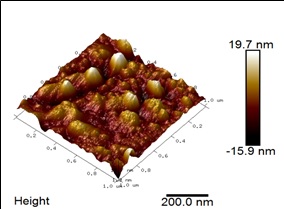NANOSYSTEMS: PHYSICS, CHEMISTRY, MATHEMATICS, 2020, 11 (2), P. 195–204
Synthesis and characterisation of CZTSe bulk materials for thermoelectric applications
Yogeshchandra Sharma – Department of Physics, Vivekananda Global University, Jaipur–303012, Rajasthan, India; yc.sharma.vit@gmail.com,
Quaternary Copper Zinc Tin Selenide (CZTSe) is a preferred candidate as an absorber layer in solar cells due to its non-toxicity and the abundancy of its constituents. This material also has thermoelectric properties suitable for solar thermal energy conversion and waste heat recovery. The preparation of bulk thermoelectric materials is a tedious, multistep task and requires considerable time and energy consumption for tuning of desired properties. Here one step solid state reaction has been used for synthesis of bulk CZTSe materials in five different ratios of elemental precursors: Cu, Zn, Sn and Se. Atomic Force Microscopy (AFM), X-Ray Photoelectron Spectroscopy (XPS) and X-ray diffraction (XRD) techniques have been used for structural and compositional analysis of the materials. AFM analysis shows significant difference in roughness parameters and grain size with respect to Cu/Zn variations. The XRD spectra of various samples show the formation of CZTSe materials. Raman spectra verifies absence of secondary phases. XPS analysis reveals constituent atoms display chemical valences of +1, +2, +4, and -1 for Cu, Zn, Sn, and Se, respectively. The stoichiometric sample, Cu2ZnSnSe4, exhibited the maximum power factor 0.30 mW·m-1K-2, having carrier concentration in the range of 1018 – 1019 cm-3 and resistivity in the range of 0.21 to 0.24 Ω·cm.
Keywords: thermoelectric devices, thermoelectric effects in semiconductors and insulators, Hall effect in semiconductors, Raman spectroscopy in
chemical analysis, photoelectron spectroscopy in chemical analysis, powder diffraction X-ray, transport properties (electric and thermal conductivity,
thermoelectric effects, etc.).
PACS 85.80.Fi, 72.20.Pa, 72.20.My, 82.80.Gk, 82.80.Pv, 61.05.cp, 74.25.Fy
DOI 10.17586/2220-8054-2020-11-2-195-204
